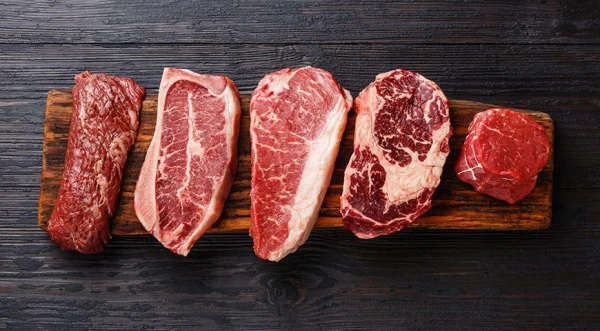
Lamb contains many vitamins and minerals beneficial for the circulatory and nervous systems, as well as for the skin. However, there are certain restrictions. For example, people with gallbladder and pancreatic diseases should avoid this meat. Experts share information about the benefits and potential harms of lamb.
Lamb is rich in B vitamins, as well as vitamins PP, E, and H, and contains minerals such as iron, zinc, selenium, phosphorus, potassium, and copper.
“Lamb contains the highest amount of vitamin B12, which is necessary for the normal functioning of the nervous system and the formation of red blood cells,” noted Elena Syurakshina, a top-category endocrinologist, candidate of medical sciences, and nutritionist.
In addition, lamb is abundant in minerals. For example, the iron necessary for hemoglobin formation and oxygen transport in the body is present in this meat almost 30% more than in pork. Selenium, found in lamb, is a powerful antioxidant that protects cells from the negative effects of free radicals. Zinc plays an important role in the immune system, metabolism, and skin health. Lamb is also high in phosphorus, which is necessary for energy production, the functioning of the muscular and nervous systems, and healthy bone growth, as well as potassium, which supports heart health. Additionally, this meat contains copper, important for carbohydrate metabolism, and cobalt, which positively affects hematopoiesis, adrenal function, and pancreatic activity. Lamb is also rich in creatine, which is necessary for energy metabolism in muscles, adds the nutritionist.
The caloric content of lamb varies depending on the cooking method and cut. The lowest calorie content is found in the shoulder cut, while the brisket has the highest calorie content. The rate of meat absorption also depends on the cooking method and the side dish it is served with.
Who should avoid eating lamb
However, not everyone is advised to consume lamb. This meat contains a lot of hard fats, which require more digestive enzymes to digest. “For this reason, lamb should not be eaten by people with gallbladder and pancreatic diseases,” explains the nutritionist.
Consumption of this meat should also be limited for those suffering from gout and arthritis. Those who are overweight are advised to avoid fatty cuts of lamb. It is better to consume such meat no more than 2–3 times a month. Lamb should be excluded from the diet in case of allergic reactions and individual intolerance.
Chef's recommendations
When choosing lamb, chef Konstantin Zhuk advises adhering to two main rules. “The first rule is that the meat should appeal to you. It’s simple. The aroma of lamb is sweetish, fresh, and meaty. The meat should not have any foreign unpleasant odors. Your nose should be your first advisor when choosing the right piece of lamb,” he says.
The specialist also recommends paying attention to the appearance of the meat. “The pieces should be even, without bone chips, neatly cut, and have a pleasant color. Many advise choosing lamb that is pale pink with white fat; such young lamb is perfect for those who prefer meat with a delicate, mild aroma. However, if you appreciate a strong, rich taste and aroma of lamb, then meat from an older animal will also suit you,” comments Konstantin Zhuk.
The brand chef reminds that the choice of meat should depend on the dish you plan to prepare. “It’s not very reasonable to make kebabs from, say, lamb shank, and shurpa from loin,” he adds.
The expert clarified that the loin is very tender meat. It should be cooked briefly over a strong open flame or in a well-heated pan. The saddle of lamb is also tender, juicy, and fatty. It is ideal for frying followed by baking at low temperatures. However, lamb shanks are better used for stews or boiled dishes.














Leave a comment